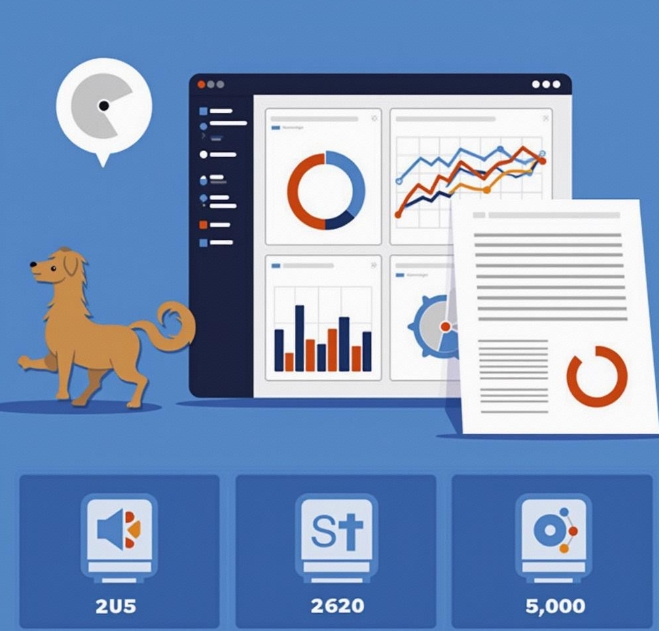Data Analysis and User Behavior Tracking in Mini Program Development
- latest articles
- 1.DApp Development & Customization: Merging Diverse Market Needs with User Experience 2.Analysis of the Core Technical System in DApp Project Development 3.How to achieve cross-chain interoperability in Web3 projects? 4.How does the tokenization of points reconstruct the e-commerce ecosystem? 5.How to Set and Track Data Metrics for a Points Mall? 6.What is DApp Development? Core Concepts and Technical Analysis 7.Inventory of commonly used Web3 development tools and usage tips 8.Development of a Distribution System Integrated with Social E-commerce 9.Six Key Steps for Businesses to Build a Points Mall System 10.What is DApp Development? A Comprehensive Guide from Concept to Implementation
- Popular Articles
- 1.Future Trends and Technology Predictions for APP Development in 2025 2.Analysis of the DeFi Ecosystem: How Developers Can Participate in Decentralized Finance Innovation 3.From Zero to One: How PI Mall Revolutionizes the Traditional E-commerce Model 4.DAPP Development | Best Practices for Professional Customization and Rapid Launch 5.Recommended by the Web3 developer community: the most noteworthy forums and resources 6.From Cloud Computing to Computing Power Leasing: Building a Flexible and Scalable Computing Resource Platform 7.How to Develop a Successful Douyin Mini Program: Technical Architecture and Best Practices 8.Shared Bike System APP: The Convenient Choice in the Era of Smart Travel 9.How to Create a Successful Dating App: From Needs Analysis to User Experience Design 10.From Design to Development: The Complete Process of Bringing an APP Idea to Life
In today's era of mobile internet, mini-programs, as a lightweight application form that requires no download or installation, have gained widespread use. Whether in e-commerce, social networking, education, or various other industries, mini-programs play a crucial role. With increasing market competition, mini-program developers need to better understand user needs, improve user experience, and ultimately achieve business goals. To accomplish this, data analysis and user behavior tracking have become indispensable tools.
This article will explore the importance of data analysis and user behavior tracking in mini-program development, how to effectively collect and analyze data, and how to optimize the design and functionality of mini-programs through user behavior tracking to enhance user retention and conversion rates.
1. Overview of Data Analysis and User Behavior Tracking in Mini-Program Development
Data analysis and user behavior tracking refer to the monitoring and recording of user operations within mini-programs through technical means, providing developers with detailed data on user behavior to help them make more precise decisions. This data not only reveals user habits within mini-programs but also helps developers understand user pain points, needs, and preferences, further optimizing product experience and business strategies.
As the mini-program ecosystem matures, many developers realize that relying solely on intuition and experience is insufficient; precise data analysis must guide decision-making. User behavior tracking offers developers a new perspective, enabling them to deeply understand every user click, swipe, browse, and even the reasons for drop-offs, thereby achieving a more personalized user experience.

2. Basics of Data Collection and Analysis
In the development process of mini-programs, data collection and analysis is a systematic process. First, developers need to clarify the types of data they want to collect, which can be divided into two main categories: qualitative data and quantitative data.
2.1 Qualitative Data
Qualitative data primarily refers to inferring user needs, interests, and emotions through user behavior. For example, the time users spend in a mini-program, their navigation paths, and page browsing depth. This type of data helps developers better understand user psychology and usage scenarios, thereby providing content and features that better meet user needs.
2.2 Quantitative Data
Quantitative data, on the other hand, involves user behavior data quantified with specific numbers, such as click-through rates, registration numbers, conversion rates, and activity levels. Through this data, developers can measure the overall operational status of the mini-program and the effectiveness of specific campaigns or updates. Quantitative data provides clear metrics to help developers determine the success of their product.
2.3 Data Collection Tools
When collecting this data, developers typically use third-party data analysis tools, such as Tencent Cloud's Mini-Program Data Analysis Platform, Alibaba's Alibaba Cloud Data Analysis Tool, and other similar tools. These platforms not only automatically collect various behavioral data within mini-programs but also provide visual reports and analysis results, helping developers easily interpret the data.
2.4 Data Processing and Analysis
After data collection, the next step is data processing and analysis. Data processing includes data cleaning, deduplication, and integration to ensure data accuracy and completeness. Analysis involves using various algorithms and models to uncover patterns and trends behind the data. Common analysis methods include descriptive analysis, diagnostic analysis, and predictive analysis.
Descriptive analysis primarily helps developers understand current operational conditions through data trends and changes. Diagnostic analysis focuses on identifying the causes behind certain anomalies, helping developers pinpoint the root of problems. Predictive analysis uses historical data models to forecast future trends, providing decision support for developers.
3. Core Metrics of User Behavior Tracking
In mini-programs, the core metrics of user behavior tracking mainly include the following categories:
3.1 User Activity
User activity is a key metric for measuring user engagement in a mini-program, typically assessed through Daily Active Users (DAU) and Monthly Active Users (MAU). High activity indicates strong user reliance on the mini-program, while low activity may suggest insufficient appeal.
3.2 Conversion Rate
Conversion rate refers to the proportion of users who complete a final goal (such as making a purchase, registering, or filling out a form) within a specific behavior path. Improving conversion rates is often closely related to optimizing user experience and implementing targeted marketing campaigns.
3.3 User Retention Rate
User retention rate reflects the mini-program's ability to keep users engaged after attracting them. Improving retention is key to enhancing user loyalty and lifetime value. Analyzing the reasons for user churn and taking appropriate measures can effectively boost retention rates.
3.4 User Behavior Path
User behavior path refers to the entire process from entry to exit when users interact with a mini-program. By analyzing user behavior paths, developers can identify how long users stay on certain pages, click-through rates, and other behaviors, allowing them to optimize page layouts and features to reduce user drop-offs.
3.5 Page Heat Analysis
Page heat analysis involves examining user dwell times and interaction frequencies on various pages to help developers understand which pages are most popular and which may have user retention issues. Through this analysis, developers can better adjust page content and optimize functionality.

4. The Role of Data Analysis and Behavior Tracking in Mini-Program Optimization
Through data analysis and behavior tracking, developers can obtain valuable feedback to guide the optimization of mini-programs. Specifically, the role of data analysis and behavior tracking is reflected in the following aspects:
4.1 Improving User Experience
Data analysis and user behavior tracking help developers identify pain points in the user experience. For instance, slow page loading times leading to user drop-offs or button designs that don't align with user habits resulting in low click-through rates. With this data, developers can accurately pinpoint issues and make timely adjustments.
4.2 Optimizing Feature Design
By analyzing user behavior paths and click data, developers can identify which features are most popular and which are overlooked. Based on this data, developers can optimize feature design, enhance frequently used functions, reduce redundant ones, and improve the overall experience.
4.3 Precision Marketing
By tracking user behavior, developers can segment users and conduct targeted marketing campaigns. For example, by analyzing purchasing behavior, developers can push personalized coupons or product recommendations to high-value users, thereby increasing conversion rates.
4.4 Enhancing User Engagement
Through a deep understanding of user habits, developers can design incentive mechanisms to increase user engagement. Examples include setting up point systems, referral rewards, and other motivational measures to keep users active and encourage long-term usage.
4.5 Improving Product Iteration Efficiency
By analyzing user data from mini-programs, developers can quickly identify features or areas that need improvement, accelerating product iteration. For certain features, developers can use methods like A/B testing to continuously optimize and find the version that best suits users.
5. Data Privacy Protection and Compliance Issues
While data analysis and user behavior tracking are crucial in mini-program development, it is equally important to prioritize user privacy protection. With the continuous improvement of laws and regulations, developers must adhere to relevant data protection policies, such as the Personal Information Protection Law (PIPL) and the Data Security Law. Developers should implement necessary technical measures to protect user data, ensuring its security and legality.
For example, user data collection should require explicit consent, avoiding unauthorized behavior tracking. Additionally, users have the right to view, modify, or delete their personal information at any time.
6. Conclusion
Mini-program development cannot do without data analysis and user behavior tracking, as they not only help developers optimize products and enhance user experience but also provide a competitive edge in a fierce market. However, while pursuing the value of data, developers must also strengthen their focus on data privacy and compliance, ensuring the protection of users' personal information while delivering high-quality services.
-

How to Increase User Stickiness and Activity Through Mini Program Development
With the development of the internet and mobile internet, mini-programs, as an e···
-

How can mini-program development assist in corporate marketing and e-commerce transformation?
In today's rapidly evolving mobile internet landscape, corporate marketing and e···
-

Offline Functionality Design and Data Synchronization in Mini-Program Development
With the rapid development of mobile internet, mini-programs, as a lightweight a···

 Blockchain
Blockchain










